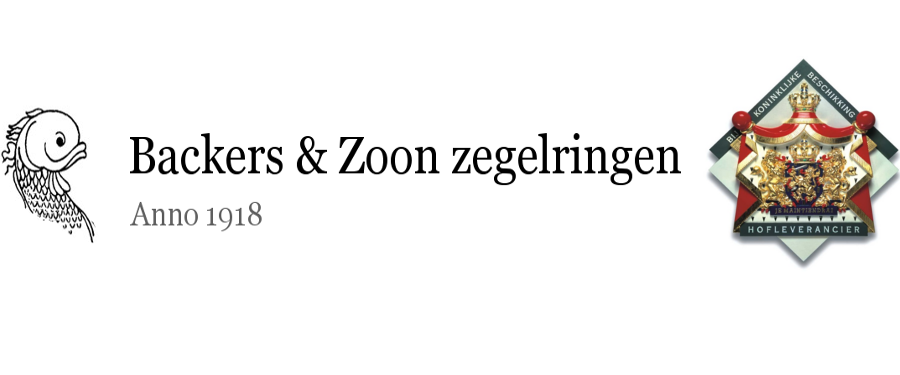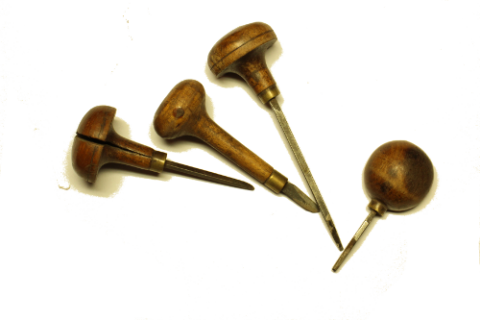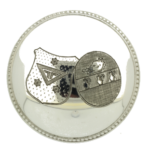The engravers who work for us, are Master craftsmen. They are outstanding in their trade. Although the rise of computer technology like laser engraving, the traditional engraving techniques are still practised.
Our engravings are first class handwork. The gemstone engraver still uses a watchmakers lathe and the precious metal engraver his engraving pins.
In the past the precious metal engravings were done by our (great)grandfather. One of his finest work was to engrave his personally designed monogram on a very extensive silver cutlery set. This cutlery set was presented to the Dutch Armed Ground Forces, Navy and Air force in honour of the birth of Princess Irene. The monogram was approved by Prince Bernhard himself.
Some of the elite gemstone engravers we have worked with, are the Amsterdam born and raised, Mr. Ben Hoffmann and the exquisite Mr. Hans de Vries. Both were educated at the company Pazdernik. In this Amsterdam originated firm which was led by Mr. Pazdernik and Mr. Herbe, many engravers were employed who were educated in Turnov (Tjech Republic). Well known names of engravers who completed the five year education of this School of Fine Arts and worked at Pazdernik were; Josef Pazdernik in 1906, Josef Herbe in 1925, Vaclav Hojny in 1929, Vaclav Neumann in 1930 and Alice Tukalova in 1937.
The company Jos. Pazdernik Gemstone Engravers was established in 1930 in the Hartenstraat nr 16 in Amsterdam by firm holders Josef Pazdernik and Jozef Gerbe. Due to the world exhibition in Brussels in 1935, a second location was opened in Brussel at Wolfers Frères in the Rue d’Arenberg were Josef Herbe worked.
Following the death of Josef Pazdernik in 1940 the company was continued by Josef Herbe and Vaclav Hojny. Jos. Pazdernik Gemstone Engravers had Dutch students like Ben Hoffmann en Hans de Vries. Unfortunately the company ceased to exist with the passing of the last firmholder in the 1980’s.
A gemstone engraver works with a so called watchmaker lathe. This is a small bench (lathe) for very fine work. The engraver makes the drills to treat the stones himself. They are made of studs. The head of the stud is removed and placed on the bench in a twisted downward motion. On the end the engraver places a small ball or wheel to edit the stone with. The stud is not made of steel but iron. At the end of the stud he puts some oil mixed with diamond powder. This powder attaches to the iron and is ready to edit any stone. The engraver therefor has up to hundreds drills for different treatments. To master this craft it should be taught from a young age. One should also have good drawing skills. Also consider that the engravings are mostly done in mirror image (negative).
A precious metal engraver has a different technique. He doesn’t use a lathe or drill but has different pins to cut the metal with. This is called surface engraving. This technique is mostly used for silverware like boxes, cups, napkin bands etc.
If the engraver needs to place a deep engraving (seal-engraving) he has to partially edge out the shield shape to place the engraving in.
A stone- and precious metal engraver both master two completely different techniques. We are yet to meet an engraver who masters both.








